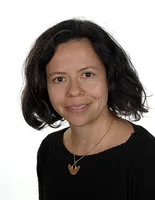Current Occupation
LS2N laboratory & équipe Signal IMage et Sonat at Ecole Centrale Nantes in France
Research Interests
- Medical image analysis
- Machine Learning
- Geometric computer vision
- Shape Analysis
Research Projects at CAMP
- Similarity/Metric/Distance Learning for Medical Applications
- Workflow Analysis Using 4D Reconstruction Data
- Endoscopic Video Processing
- Organ Recognition
- Computational Sonography
- Stereo Time-of-Flight
- Human Motion Analysis using Time-of-Flight (ToF) Cameras
- Cross Modalities Image Synthesis
- Patient Monitoring for Neurological Diseases Using Wearable Sensors
- Activity Recognition and Pose Estimation using Wearable Inertial Sensors
Previous Projects
Unsupervised Articulated Shape Representation, Segmentation and Registration
INRIA Rhone-Alpes, Perception Group. Grenoble, France.
In collaboration with David Knossow, Fabio Cuzzolin, Avinash Sharma
Advisor: Radu Horaud
This project studies alternatives for the representation, segmentation and registration of articulated shapes in the absence of a-priori models. The analysis starts with the 3-D reconstruction of the objects (voxelset or mesh) from video sequences obtained with a multiple-camera setup, and with the representation of the voxelset or the mesh as a graph. Relying on the spectral-graph theory and on the spectral embedding techniques (e.g Laplacian Eigenmaps, LLE), a quasi-invariant representation of the shape is built and used for solving the registration and segmentation problems. The Registration consists on finding a dense match between the nodes of wide-separated poses of the same shape. The problem is solved by first aligning the two spectral representations trough the matching of eigenfunction histograms, and then refined with an EM algorithm formulated following the Bayesian framework for clustering. Finally, the Segmentation relies on a spectral clustering method based upon k-wise relationships.
RELATED PUBLICATIONS:
- Inexact Matching of Large and Sparse Graphs Using Laplacian Eigenvectors David Knossow, Avinash Sharma, Diana Mateus and Radu Horaud Proceedings of 7th Workshop on Graph-based Representations in Patterns Recognition - GBR 2009.
- D. Mateus, R. Horaud, D. Knossow, F. Cuzzolin, E. Boyer. Articulated Shape Matching Using Laplacian Eigenfunctions and Unsupervised Point Registration. IEEE Conference on Computer Vision and Pattern Recognition - CVPR 2008.
- F. Cuzzolin, D. Mateus, D. Knossow, E. Boyer, R. Horaud. Coherent Laplacian 3-D Protrusion Segmentation. IEEE Conference on Computer Vision and Pattern Recognition - CVPR 2008
Sparse Scene Flow
INRIA Rhone-Alpes, Perception Group. Grenoble, France. (2004-2007)
Advisor:Frederic Devernay.
The scene-flow is a 3-D vector field describing the motion of objects present in a scene. In this project we develop a multiple-camera extension of the Lucas-Kanade tracker. Analysis and algorithms are proposed for two types of descriptors: points and small oriented surface patches (surfels). A cost function is defined in each case as well as the iterative optimization update rules to minimize it. A pyramidal implementation is employed to deal with high-speed motion. The concatenation of scene flow vectors along time, gives rise to 3-D trajectories useful for motion analysis, e.g trough the segmentation of the trajectories in groups of coherent motion.
RELATED PUBLICATIONS:
- F. Devernay, D. Mateus, M. Guilbert. Multi-Camera Scene Flow by Tracking 3-D Points and Surfels. Proc. IEEE Conference on Computer Vision and Pattern Recognition (CVPR). New York, 2006. [www]
- D. Mateus, R. Horaud. Spectral Methods for 3-D Motion Segmentation of Sparse Scene-Flow. IEEE Workshop on Motion and Video Computing, (WMVC). Austin, 2007 [www]
Visual control for robots in semi-structured outdoor environments
LAAS. RIA Group. Toulouse. France. 2003-2004.
MsC. Disertation
Advisor:Michel Devy
In collaboration with Gabriel Avina
Project aimed to establish a navigation framework for robots in semi-structured outdoor environments enabling the execution of semantic tasks by chaining of elementary visually-based movement primitives. The visual control begins with the color segmentation of the images. The regions obtained are then identified as one of the previously learned classes (e.g sky, road, tree). Navigable regions are modeled and tracked with a an active contour. The objective of the internship was to design an algorithm able to dynamically plan short-term smooth trajectories for the robot to follow, and to control the execution of the designed path.
RELATED PUBLICATIONS:
- Mateus, G. Avina, M. Devy. Robot Visual Navigation Semi-structured Outdoor Environments, Proceedings of the IEEE International Conference on Robot Automation (ICRA). Barcelona,2005. [pdf]
Localization and Navigation of Robots in Metric and Topological Environments
Universidad Javeriana. Electronics Engineering Department. Bogota. Colombia. 2002.
BsC. Dissertation.
Advisor:Carlos Parra.
In collaboration with Fernando Conde y Daniel Otero.
Project comprising the conception of an autonomous mobile robot, Macondo, starting from the hardware and mechanical design, trough the design of the embedded systems for perception and control, and concluding by the development of the navigation tasks (low-level control, localization, path planning). The environment is assumed to be known and is represented with a hybrid, metric (occupation grid) and topological (graph), map. The robot uses genetic algorithms and an A* for path planning, and a Markov Localization method to determine position inside the representation by taking into account the incoming information from different sensors. Both path planning and localization tasks were efficiently programmed in low-level microprocessors languages.
RELATED PUBLICATIONS:
- D. Mateus, F. Conde and D. Otero. Autonomous Robot Navigation in Topological and Metric Environments. IEEE Latin American CAS Tour 2002.
